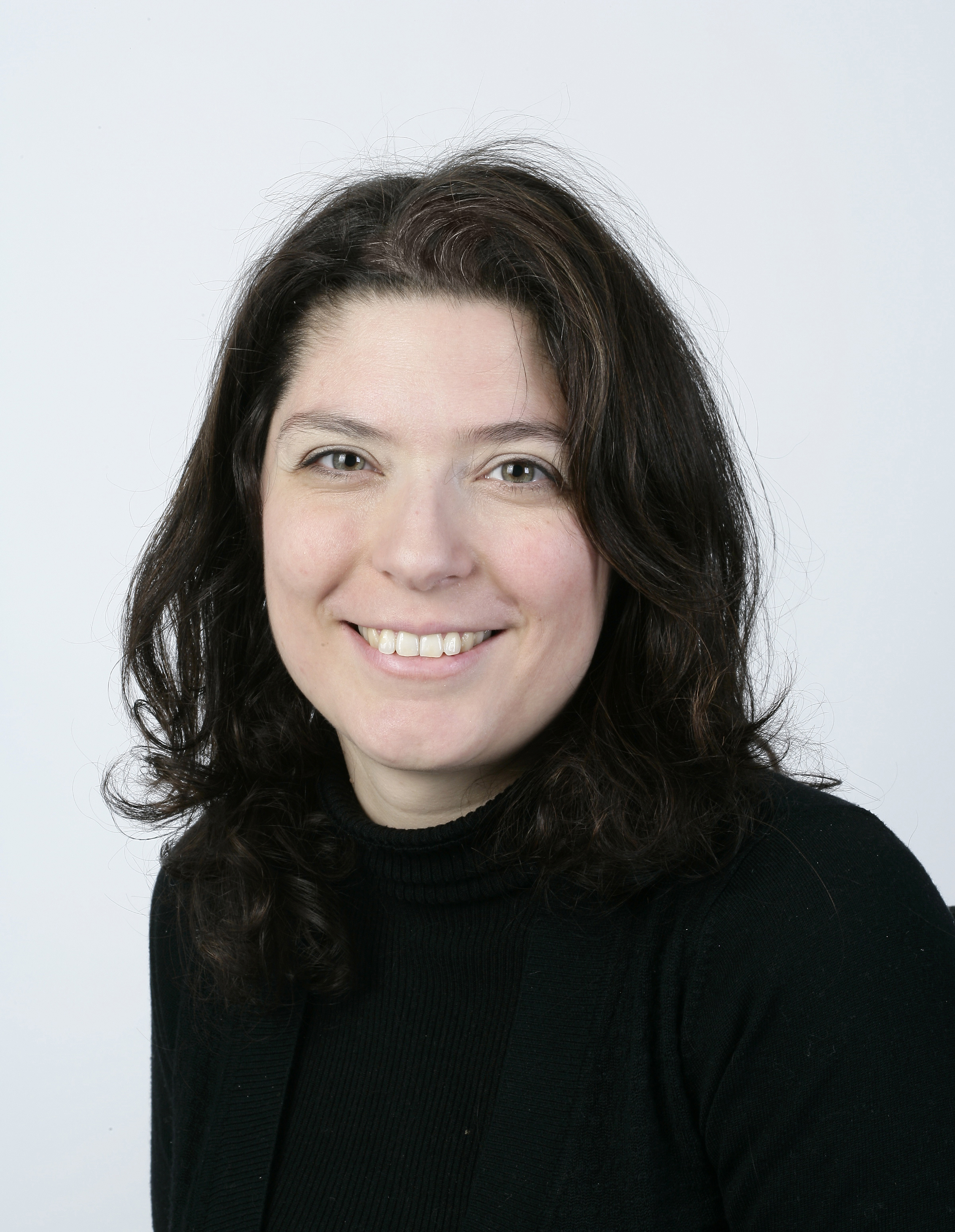The grand master 'paintings' that are actually the most exquisite floral photographs you'll ever see
Harald Altmaier’s photographs of floral tableaux, as colossal in effort as in scale, recall 17th-century Dutch still lifes, but the inspiration behind them is far wider, as Carla Passino finds.
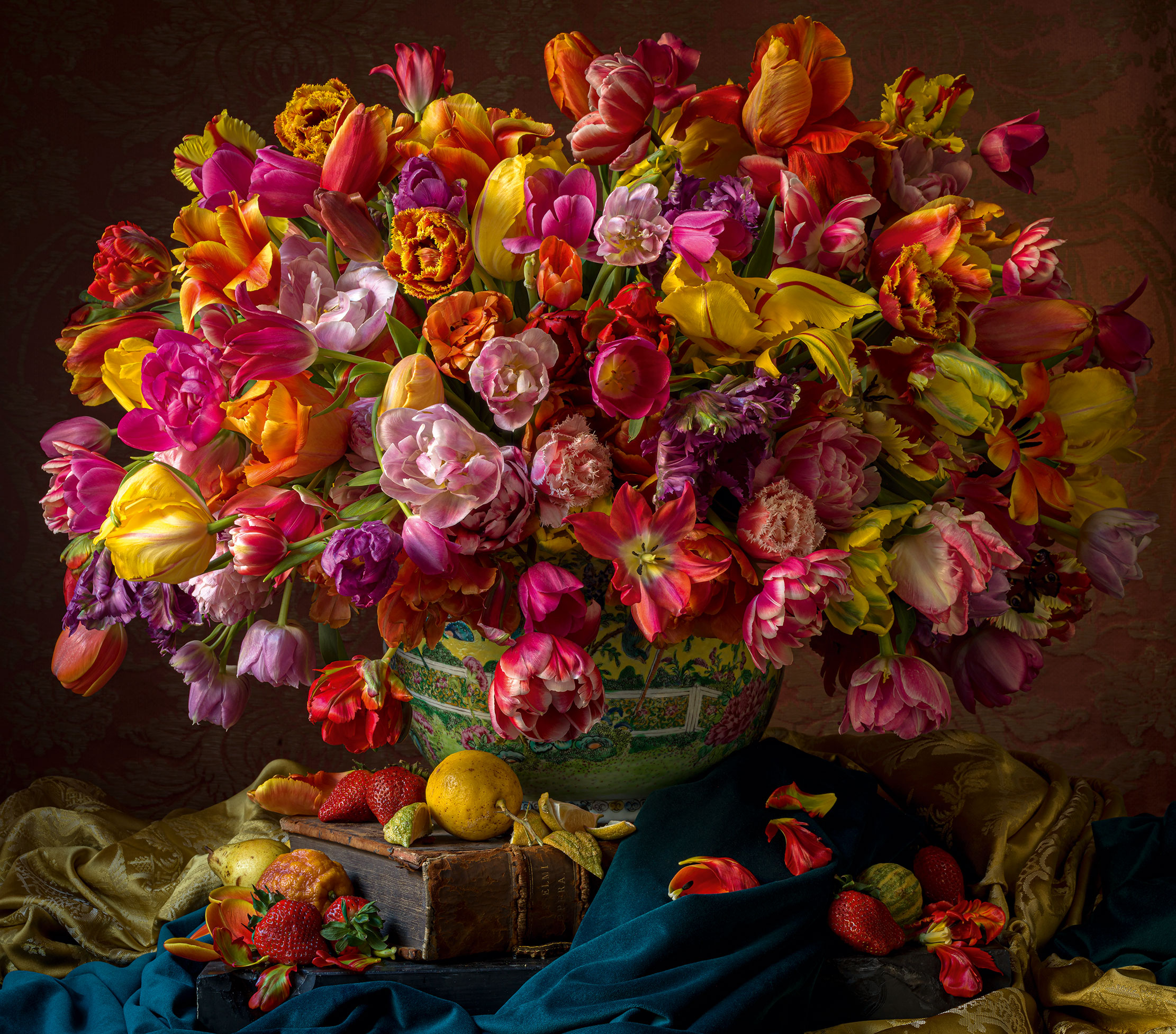

A piglet, soft pink with dark-brown stripes, sits on a vitrine shelf next to an aged urn, a candle and three frosted-glass vases. He’s a model in search of a canvas, on which he will appear when inspiration strikes the artist, photographer Harald Altmaier. ‘I saw him in Paris and had to have him. He’s been here since May and will go in a woodland shot, I think, with ferns, mushrooms — and there will be a little mole coming out of the soil.’
Mr Altmaier’s pictures are closer to paintings than classic photographs, portraying monumental floral arrangements against gilded mirrors, sleeping cherubs and swathes of damasks, silks and rich velvets that cascade in sinuous drapes, as butterflies, caterpillars or stag beetles frolic among the petals. Reminiscent of 17th-century Dutch still lifes, the images often have a deeper meaning and hidden messages, with memento mori sprinkled across the foliage — a skull here, a spent candle there and some canvases calling for a game of ‘spot the crow’. (A clue for the wintry Composition V: peer closely between the Savoy cabbage and the old man’s beard).
What’s perhaps even more astounding is the fact that every single flower is not only real, but has been artfully arranged by Mr Altmaier himself, a florist by trade. Long passionate about photography, he invested in good cameras about 10 years ago to take pictures of his bouquets, creating backdrops to give ‘an idea of scale, how big these flowers actually are’. Next, he started building entire scenes, which, over time, evolved into floral tableaux. ‘I have always absolutely adored still-life paintings of the Dutch kind from the 16th and 17th centuries, so it was natural to do this.’
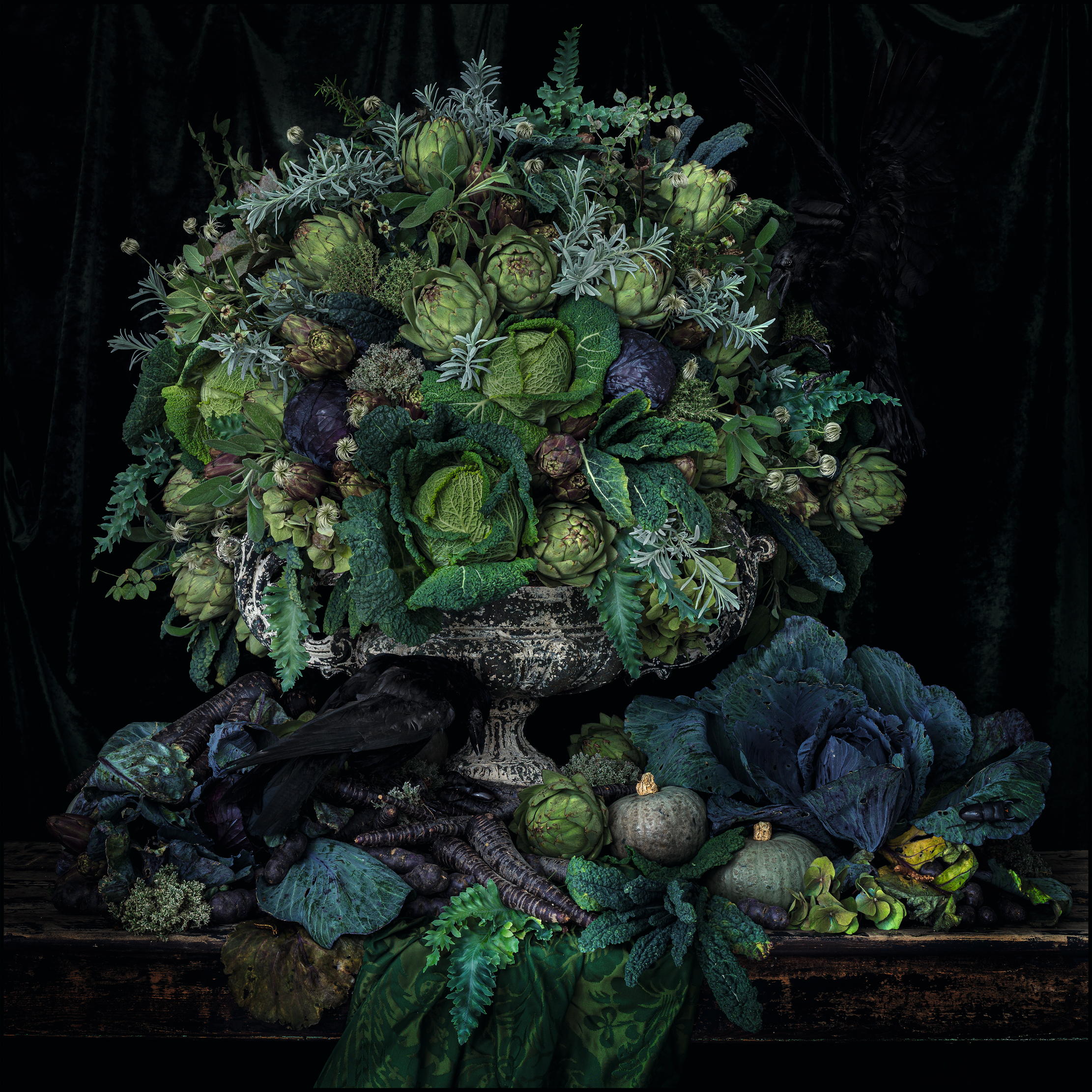
Winter is coming and vegetables replace flowers in Composition V—never one to allow waste, Mr Altmaier gave the entire display to neighbours to cook with. Can you spot the crows? ©Harald Altmaier
Mr Altmaier cherishes having full creative control over every little aspect of his compositions, whether lighting (he uses natural light with very long exposures), schedule (‘I can work as late as I want’) or money: ‘I don’t have a budget, do you know how wonderful that is?’
Finding flowers is more of a challenge than one might think. It’s not only a matter of securing the right varieties: most commercial blooms, he reveals, are grown very straight so they can be transported easily and stand proud in a vase, whereas, for his arrangements, he wants some to droop and others to ramble. He has been known to raid friends’ gardens (with permission), knock on people’s doors and say: ‘Here’s an orchid. Can I pick some of your lilac?’ He has even grown his own.
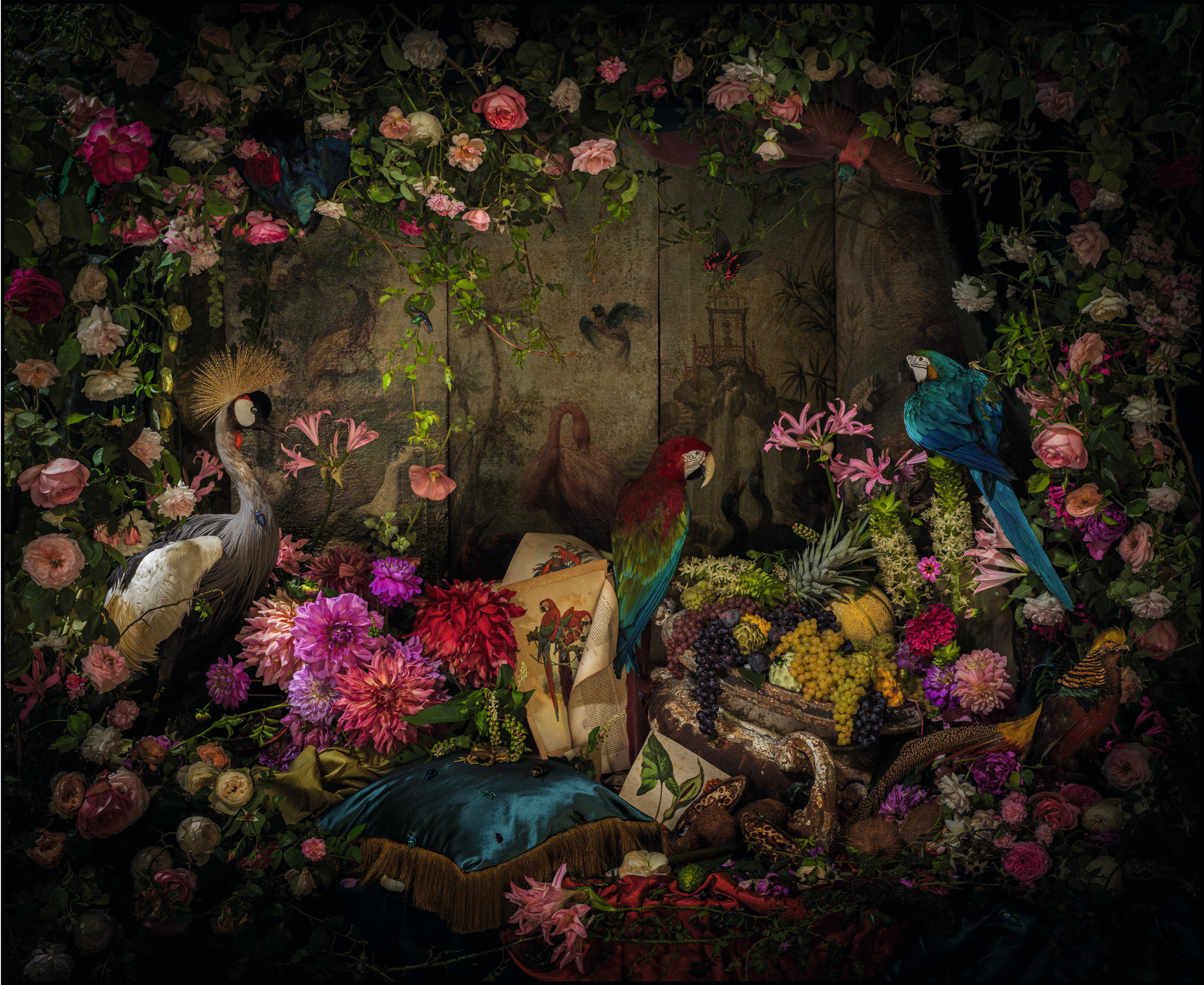
A bug is brave (or daft) enough to climb on a grey crowned crane in this huge tableau, for which Harold Altmaier raided a friend’s rose garden. ©Harald Altmaier
The gnarly lemons he uses in some arrangements come from Italy, the dried insects from Paris, the birds from a London taxidermist that supplies film props or, sometimes, from eccentric fashion designer Basia Zarzycka, who has lent him, among others, three flying pheasant to add playfulness to a maroon triumph of camellias, tulips and hellebores. As for the carefully chosen antiques in the background, Mr Altmaier has Joe Chaffer of Vagabond Antiques on speed dial, whether for a 17th-century Italian tapestry or a pedestal urn in Breccia Medicea marble, the veining of which echoes the blue and purple of lilacs, foxgloves and campanulas of Composition XV.
Much thought goes into staging each tableau, because the pictures are barely retouched in post-production — except perhaps for removing the insects’ pins — and Mr Altmaier freely admits that, when he is prepping for a shot, his studio looks ‘like a bombsite’. Strewn on the floor are thousands of flowers, four or five times the number he will use, so that he can choose them at different stages of maturity. ‘Certain roses I want almost completely over, so they tell a story.’
Exquisite houses, the beauty of Nature, and how to get the most from your life, straight to your inbox.
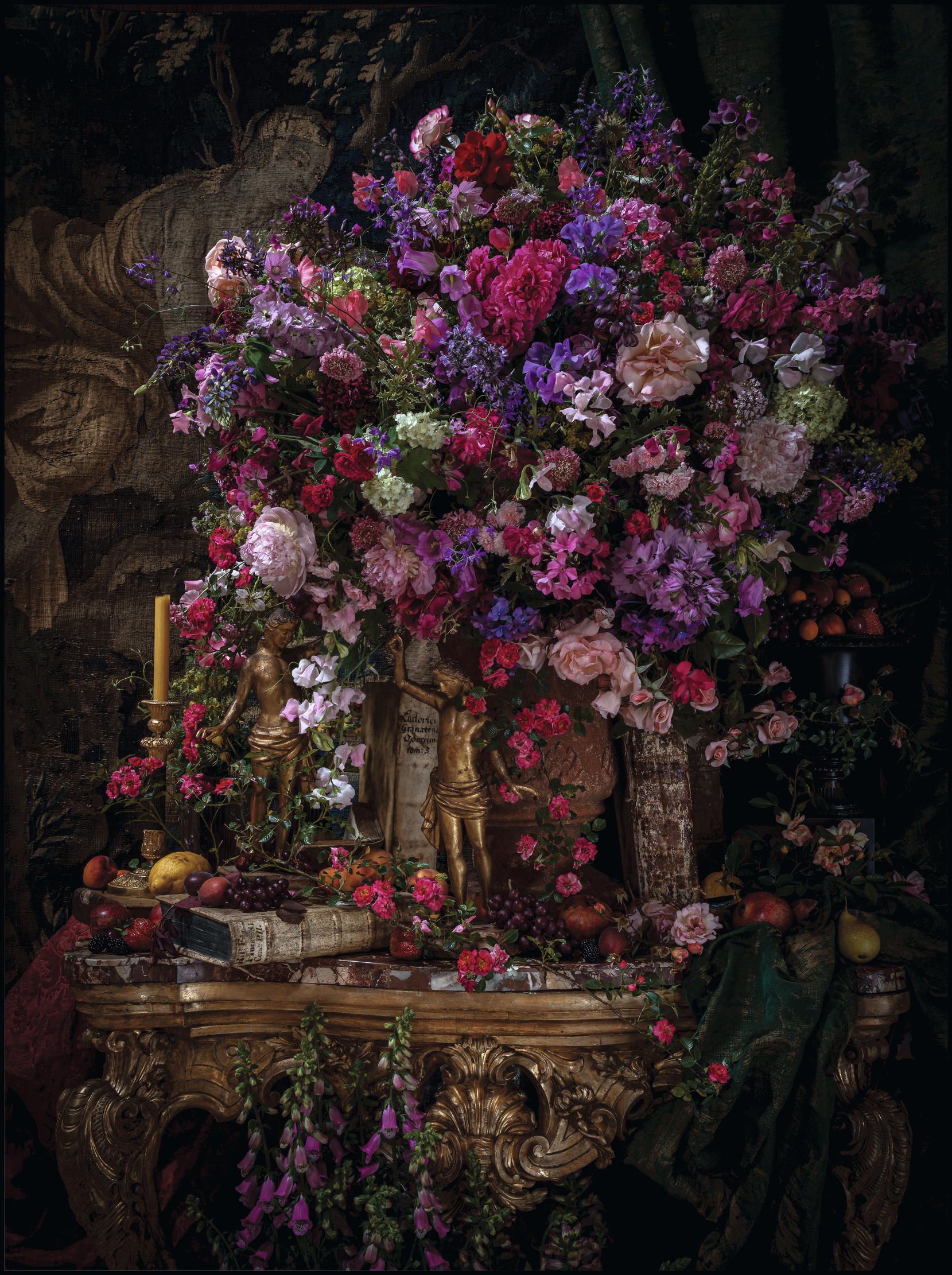
Summer blooms crowd Composition XVI, obscuring Poseidon, whose presence is only suggested by Amphitrite gazing down from the top left corner. ©Harald Altmaier
As he begins photographing, he examines the arrangement through a laptop or an iPad: ‘Every time you shoot, you blow it up and look at all the details — and you see there’s a broken flower, that butterfly collapsed, this rose moved.’ Once in a while, he makes adjustments — ‘but it’s not that easy, because every time you add a flower, something else moves. If [it’s] 30 shots until you actually get the final one, that whole arrangement is constantly moving, dancing in front of you’.
Leaves and blooms almost seem to have a mind of their own, so, despite his thorough preparation, not everything goes according to plan: ‘A painter can paint that one rose leaf and it goes exactly where he wants it to be. I don’t have that choice. Flowers can drive you — well, not quite insane, but…’ The weather is a potential nightmare, too. ‘This was nerve-wracking,’ he says, pointing at a tableau of pristine white flowers. Very pale arrangements are challenging because every time you touch a petal you leave a mark, but this one was taken in an ancient barn in Petworth, West Sussex, on a very hot summer day, when the thermometer hit 37˚C: ‘Love in a mist, Queen Anne’s lace — they wilt in a minute. I replaced the sweetpeas four times.’ However, he says, ‘the advantage of being my age and having done 45 years of flower-arranging is that I’m chilled’ — and, indeed, the photograph is a soothing sea of white tranquillity, with not even the slightest hint of the effort it required.
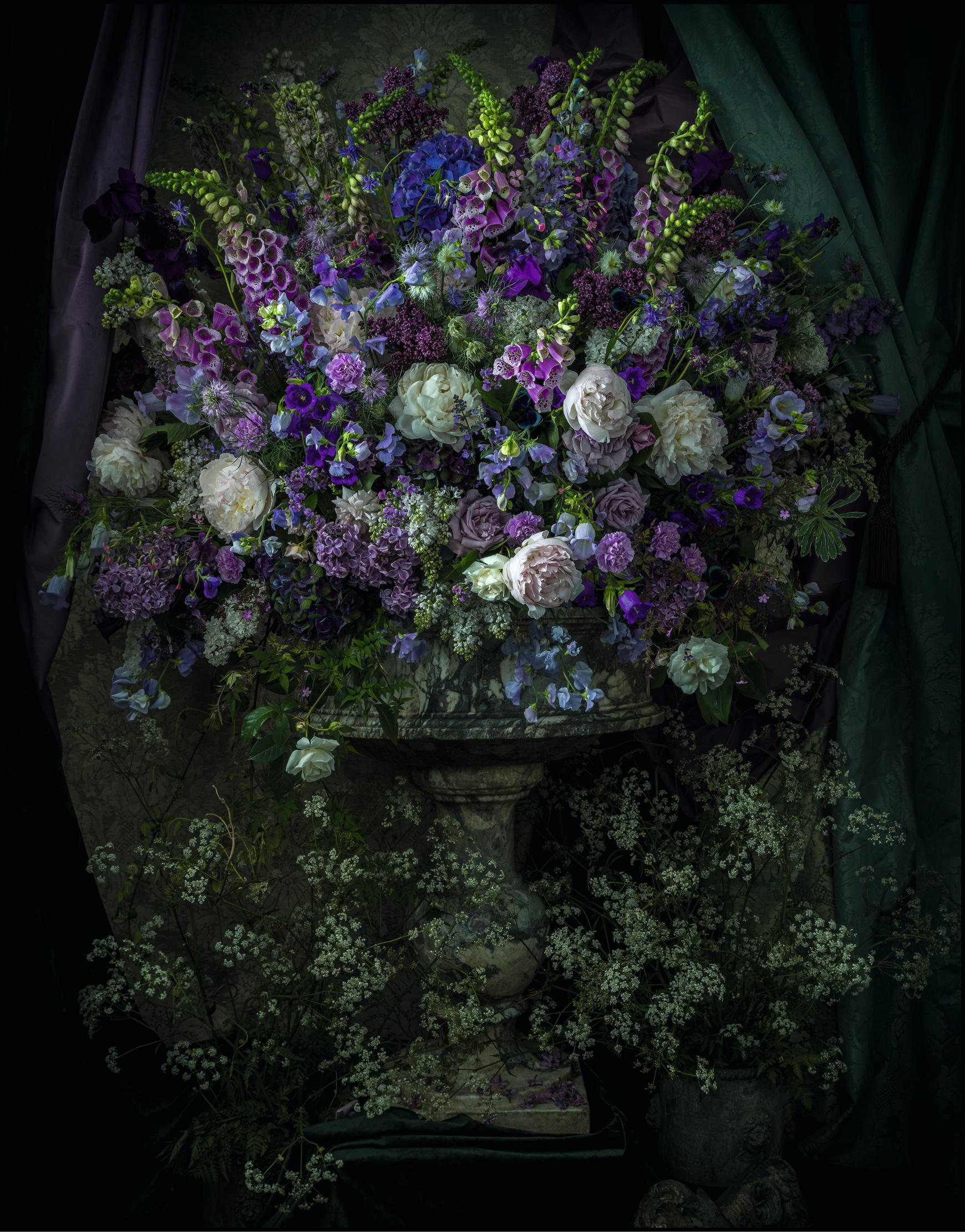
There are no hidden messages in this tableau, simply a joyous celebration of the darling buds of May. ©Harald Altmaier
The same care goes into choosing the right frames. They, too, hark back to the 17th century — notably, Dutch master Balthasar van der Ast. Based on the frame of an Ast flower painting at the Rijksmuseum in Amsterdam, The Netherlands, they’re made by John Davies Framing in almost the same way as they would have been then. Each is bespoke, with up to 15 coats of polish and colours chosen to highlight the tones of the composition; so a frame with a touch of brown will encase the rich blaze of an autumnal grouping, a matte-black one will sheathe blooms in cooler hues.
None of Mr Altmaier’s pictures, however, is ever a copy or even directly influenced by a Dutch master’s painting — not only because those artists collated flowers from different seasons in their artwork. ‘My inspiration comes from many different places,’ he admits, mentioning antique portraits, screens and musical stands among others, before proudly presenting his latest muse, a taxidermied lizard: ‘He will be in a shot where he runs along a console and steals an egg out of a nest.’
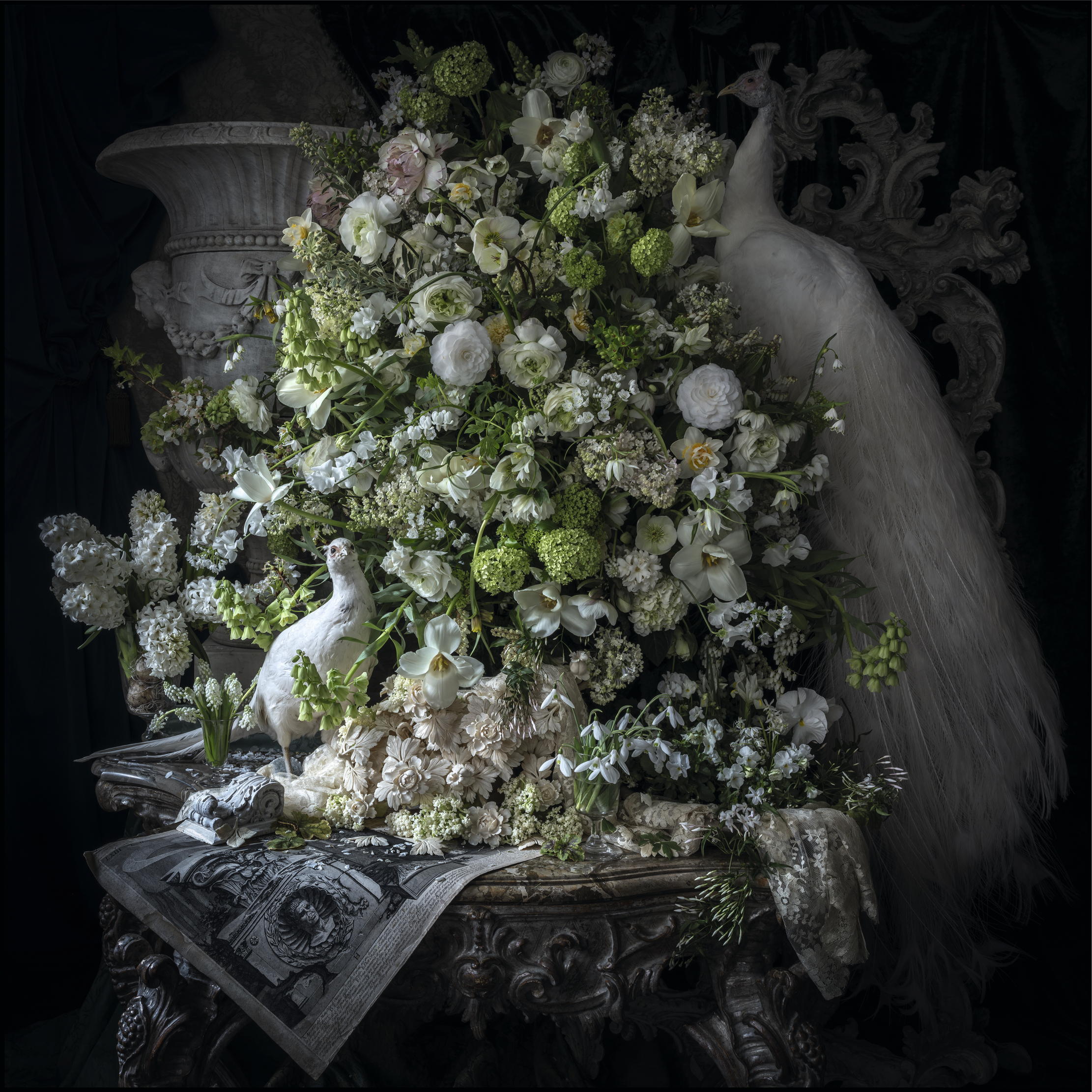
Perhaps one of Mr Altmaier’s most serene compositions—yet one of the most challenging to photograph, as white flowers bruise easily. ©Harald Altmaier
Even so, those pesky blooms Mr Altmaier loves will sometimes throw a curveball and take him in an unexpected direction: ‘If the flowers have a different appearance, if there’s something more beautiful, you steer that way. It’s all in the moment. You have an idea, but, on the day, you let go and play with it.’
Visit www.haraldaltmaierphotography.com; @haraldaltmaierphotography
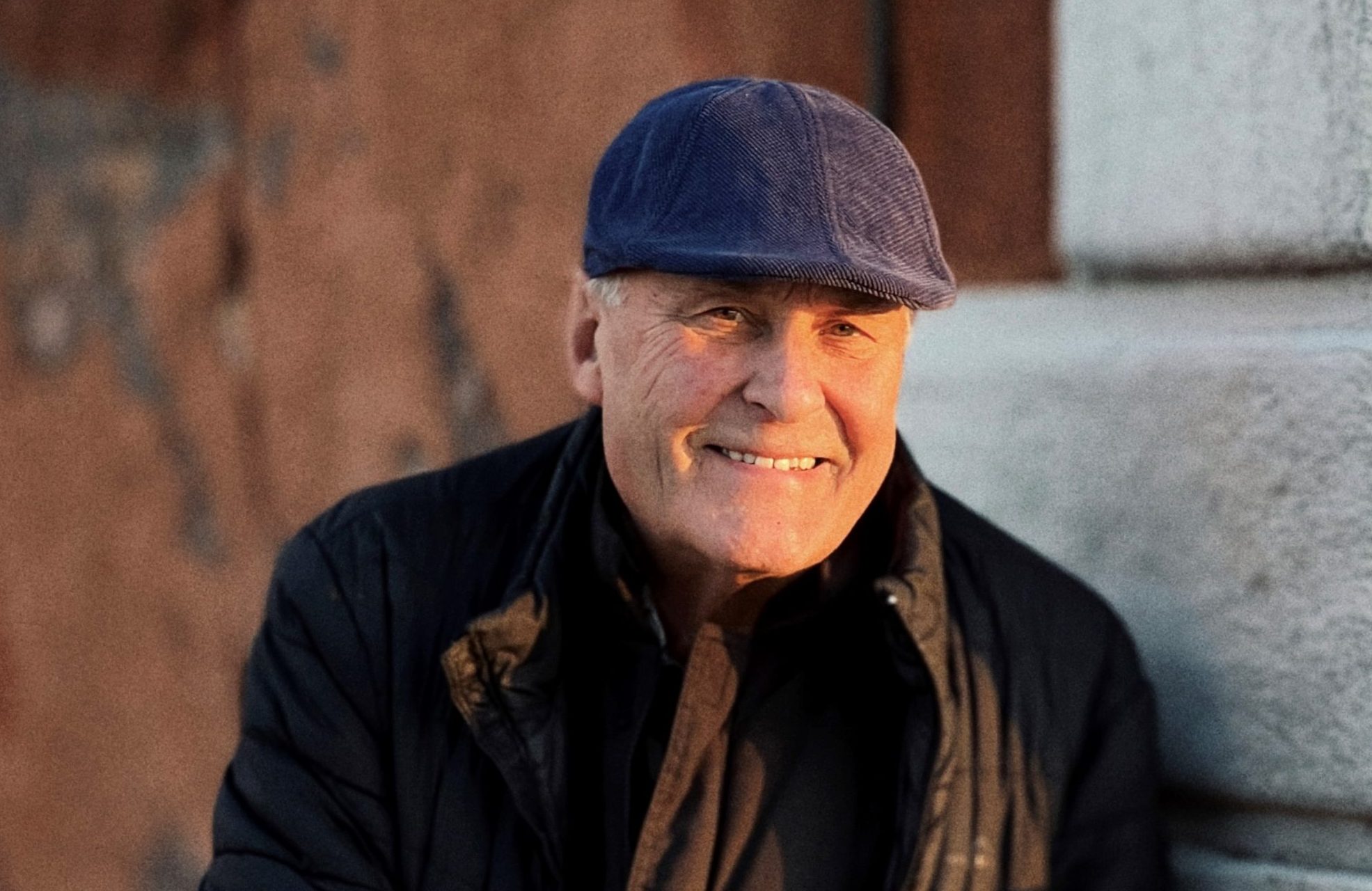
Credit: Charlie Waite
'If you get 12 great photographs a year, you're doing well': Charlie Waite on the secrets of landscape photography
The world-renowned landscape photographer Charlie Waite joins the Country Life Podcast.
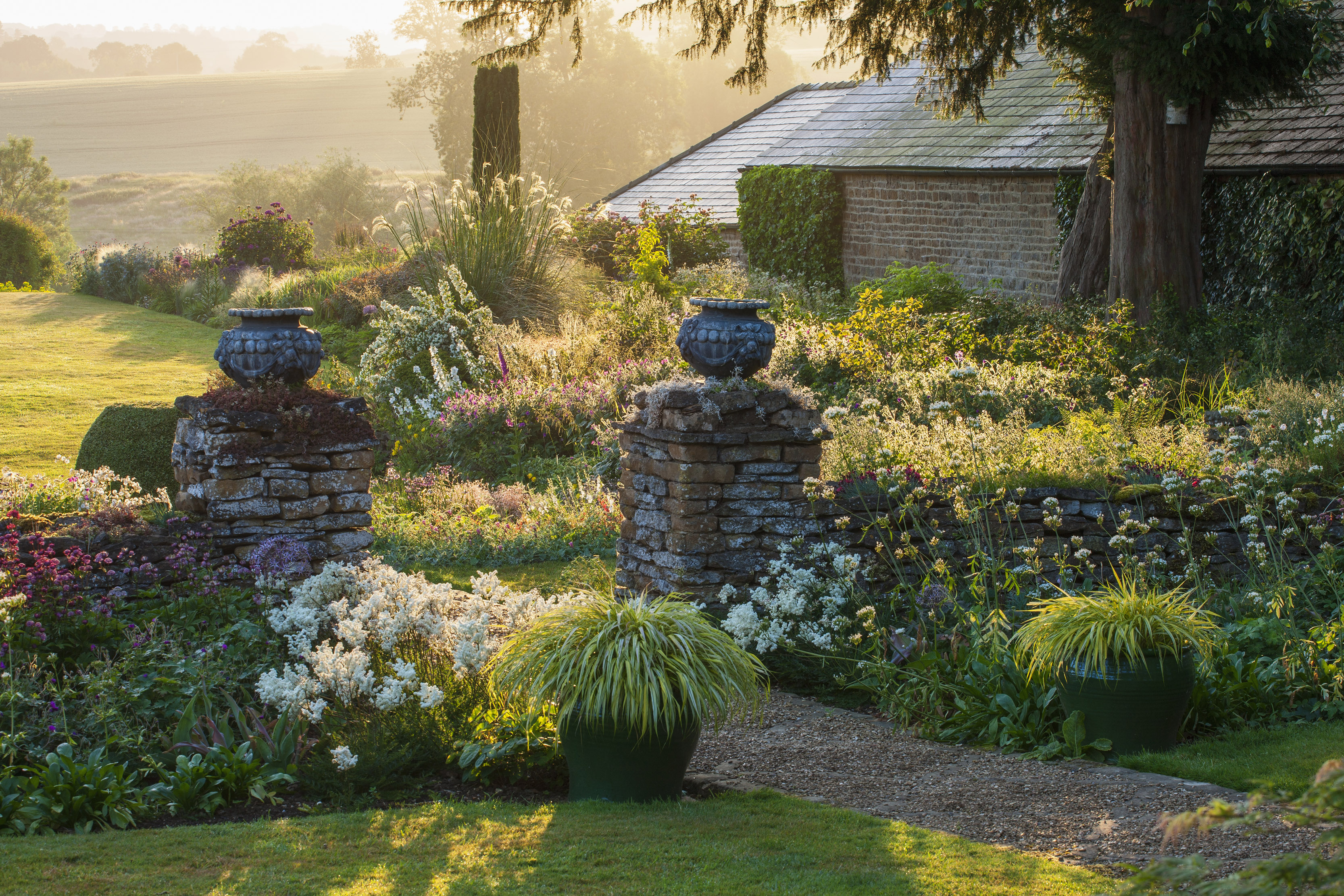
Pettifers Garden, Oxfordshire, created by the late Gina Price, is a favourite spot of Clive Nichols. This early morning view is taken from the back of the house.
Clive Nichols: Secrets from the king of garden photography
Britain's top garden photographer Clive Nichols joins the Country Life podcast.
Carla must be the only Italian that finds the English weather more congenial than her native country’s sunshine. An antique herself, she became Country Life’s Arts & Antiques editor in 2023 having previously covered, as a freelance journalist, heritage, conservation, history and property stories, for which she won a couple of awards. Her musical taste has never evolved past Puccini and she spends most of her time immersed in any century before the 20th.
-
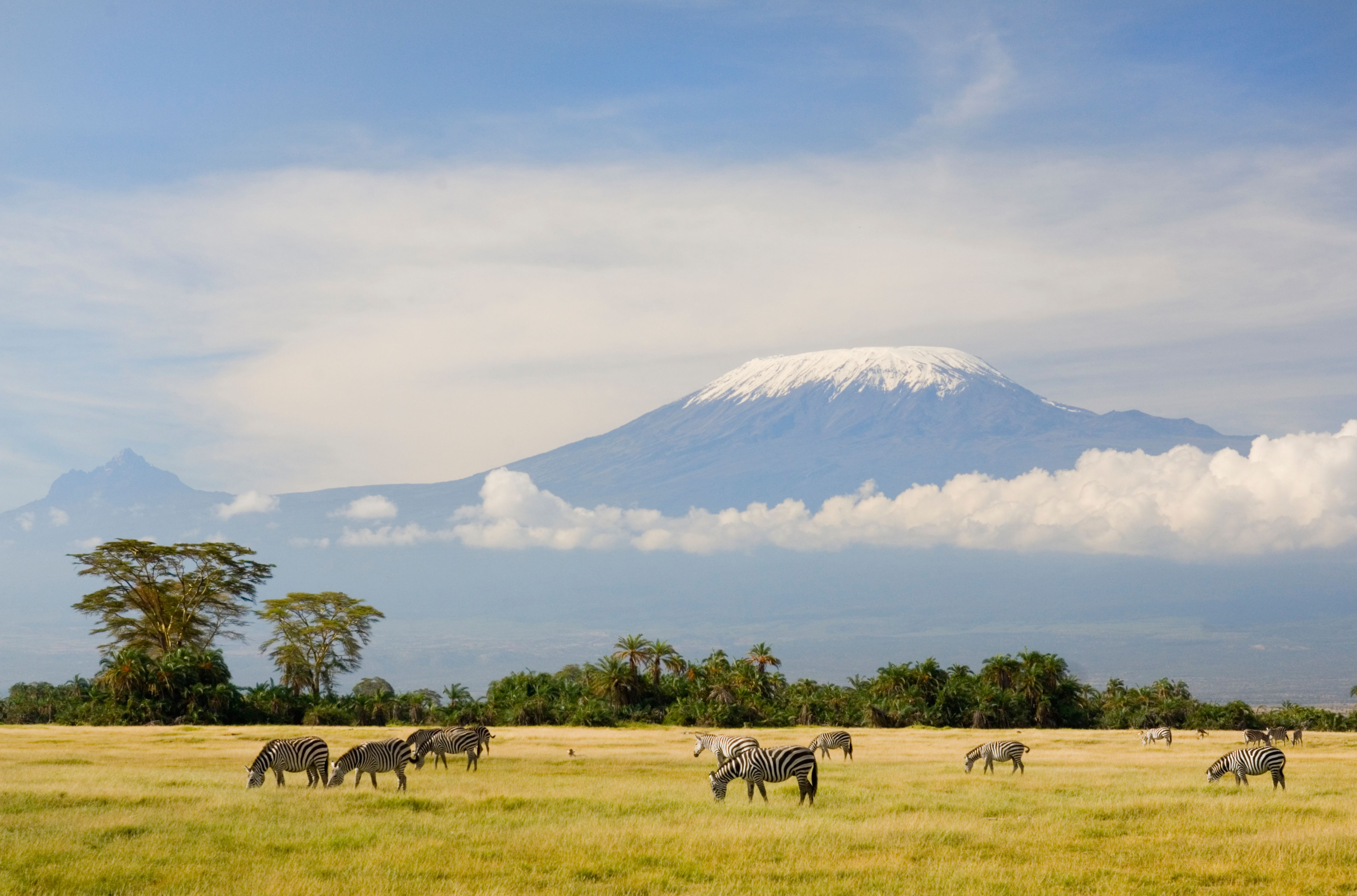 Become a geography wizard by taking the Country Life Quiz of the Day, November 28, 2025
Become a geography wizard by taking the Country Life Quiz of the Day, November 28, 2025So many facts about rivers, capital cities, depths of things. You'll be the life and soul of every party by the end.
-
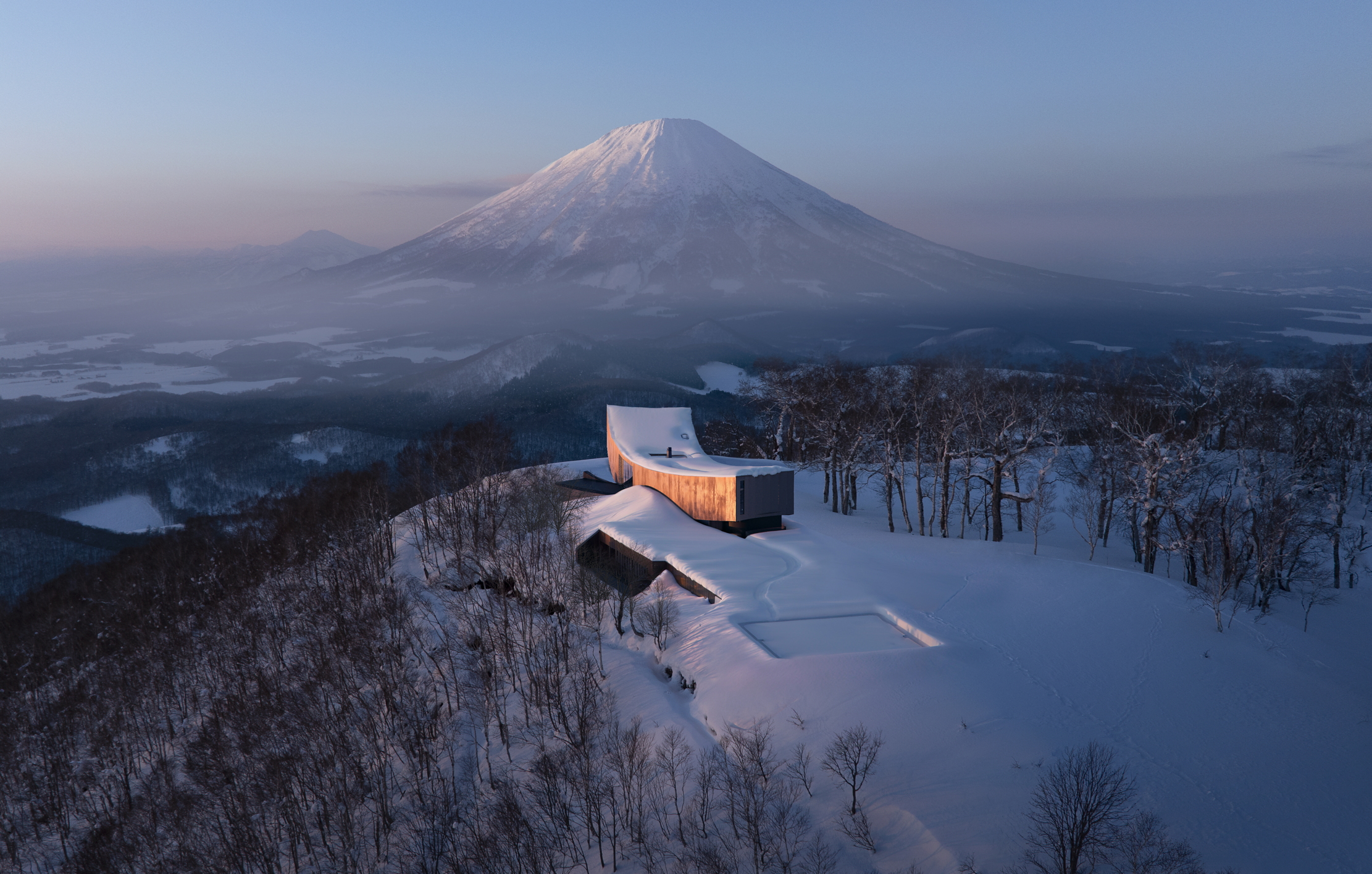 The dream ski chalet for sale: Plan world domination and ski Japow at the same time
The dream ski chalet for sale: Plan world domination and ski Japow at the same timeEach week, James Fisher fantasises about a dream ski chalet he'd like to buy, but can't — from architecturally striking marvels, to cosy mountain retreats, and everything in between. This week, we are off to the top of the Rusutsu resort in Japan.
-
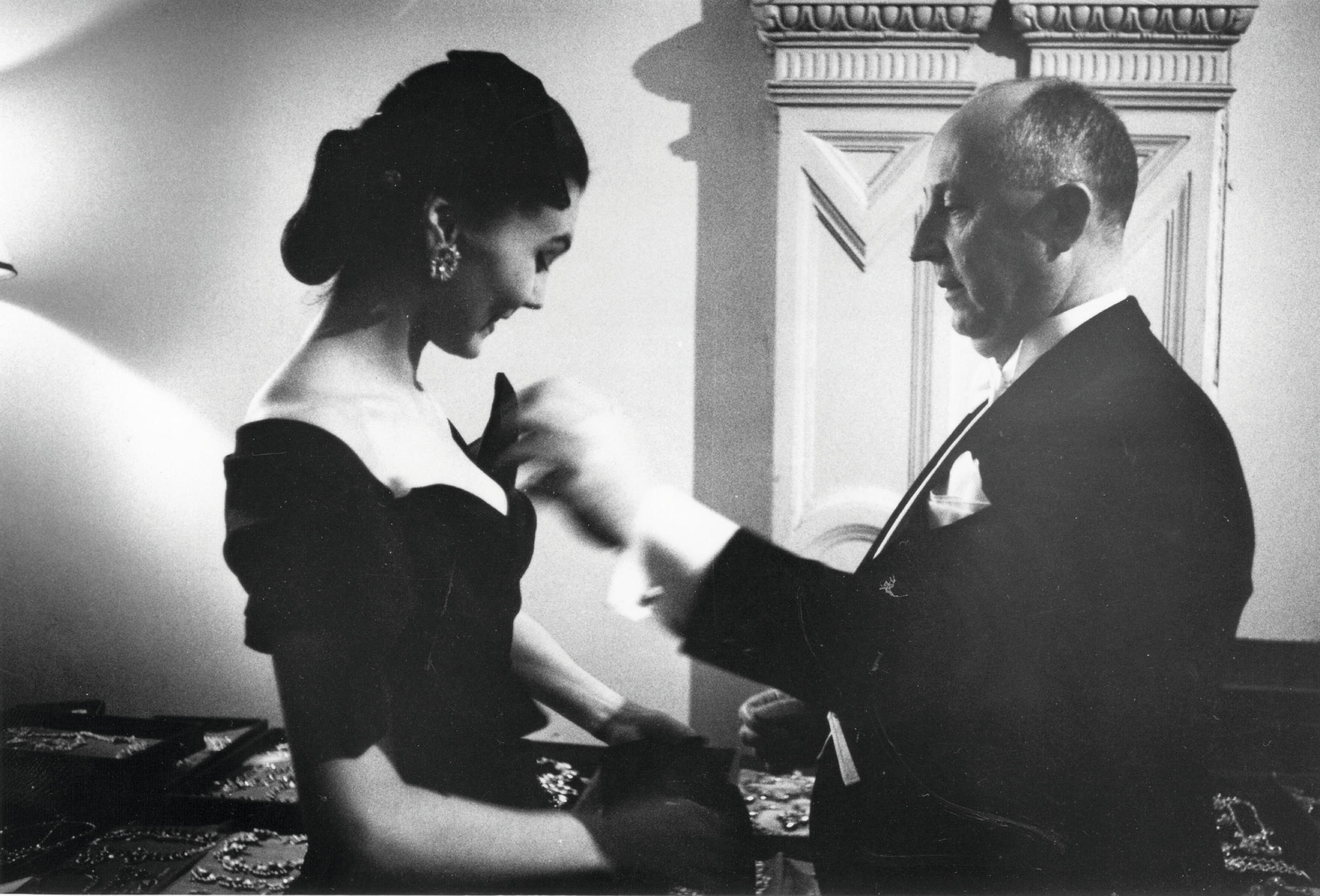 Country Life's top 10 arts stories of 2024
Country Life's top 10 arts stories of 2024From the artist killed on his first day in the war to a masterpiece once sold for £30, these were our most popular arts stories of 2024.
-
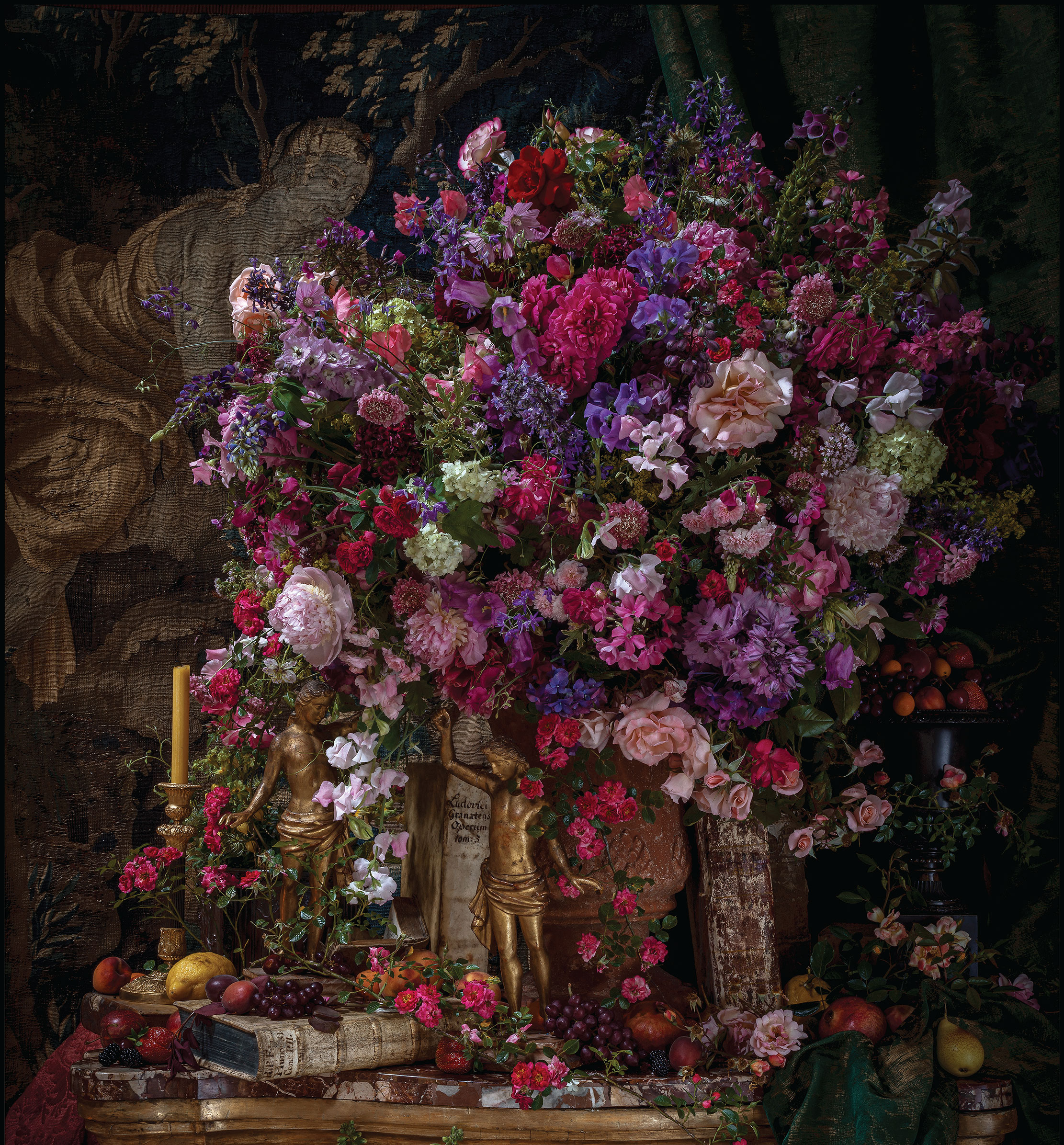 Dawn Chorus: The photographer-florist creating modern Grand Masters, plus Ashdown Forest and our Quiz of the Day
Dawn Chorus: The photographer-florist creating modern Grand Masters, plus Ashdown Forest and our Quiz of the DayA look at the work of Harald Altmaier, an unusual solution to an imaginary problem, and much more besides in today's Dawn Chorus.
-
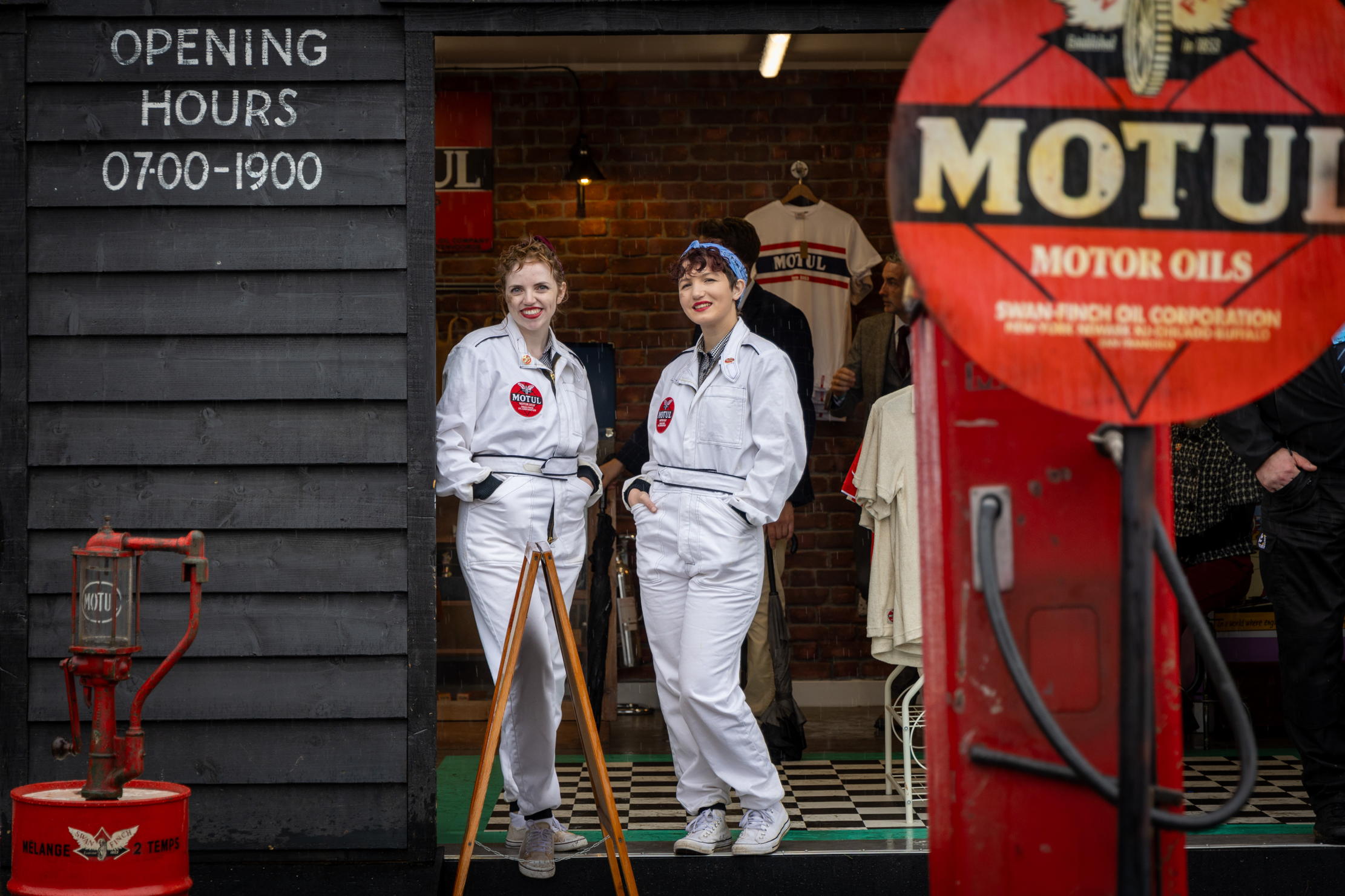 Goodwood Revival 2024: What you missed at the world's most elegant motor race weekend
Goodwood Revival 2024: What you missed at the world's most elegant motor race weekendThe Goodwood Revival is one of the highlights of the summer — even when the weather does its best to put a damper on things.
-
 'If you get 12 great photographs a year, you're doing well': Charlie Waite on the secrets of landscape photography
'If you get 12 great photographs a year, you're doing well': Charlie Waite on the secrets of landscape photographyThe world-renowned landscape photographer Charlie Waite joins the Country Life Podcast.
-
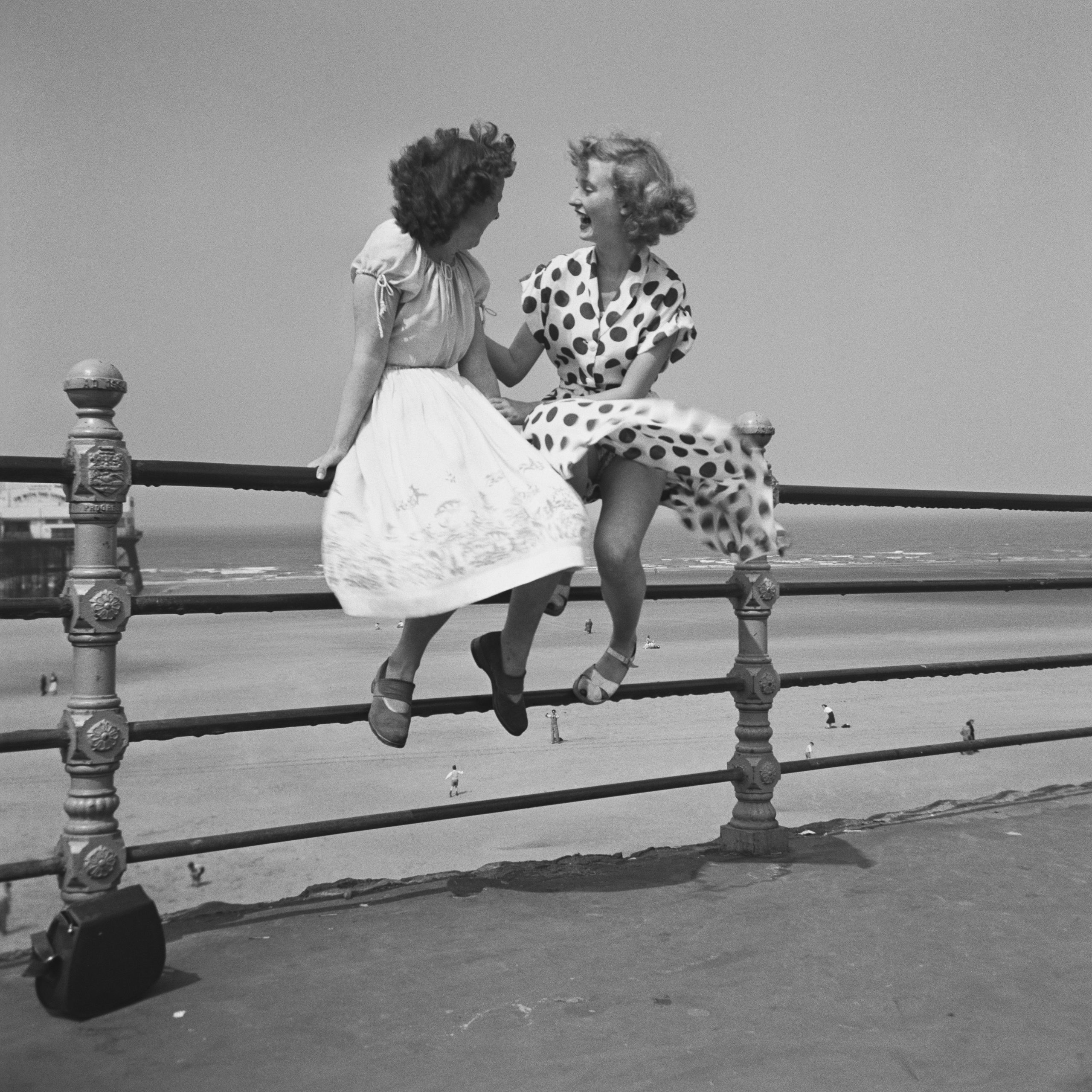 Bert Hardy: The photographer who chronicled mid-century Britain, from the Blitz to Blackpool
Bert Hardy: The photographer who chronicled mid-century Britain, from the Blitz to BlackpoolThe work of photographer Bert Hardy is celebrated in a new show at The Photographers’ Gallery in London.
-
 In Focus: A photographer's magical celebration of the farmers of Yorkshire
In Focus: A photographer's magical celebration of the farmers of YorkshirePhotographer Valerie Mather has chronicled the lives of farmers in her award-winning images, which are now collected together together in a handsome book: Yorkshire Born & Bred: Farming Life.
-
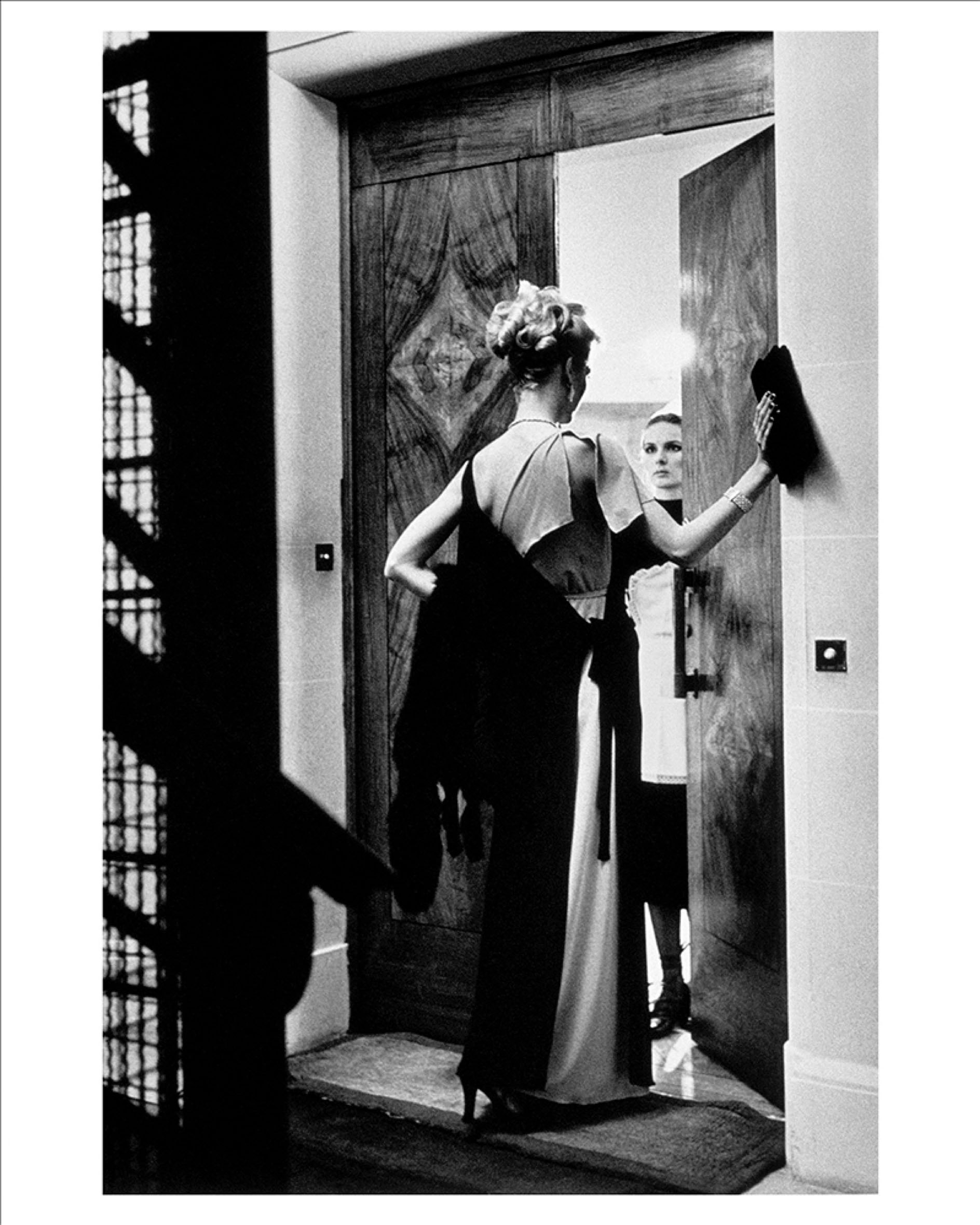 In Focus: The incomparable photography of Helmut Newton
In Focus: The incomparable photography of Helmut NewtonPhotographer Helmut Newton enjoyed a glittering career that blurred the lines between fashion, photography and art; as his centenary approaches he's celebrated in a new exhibition.
-
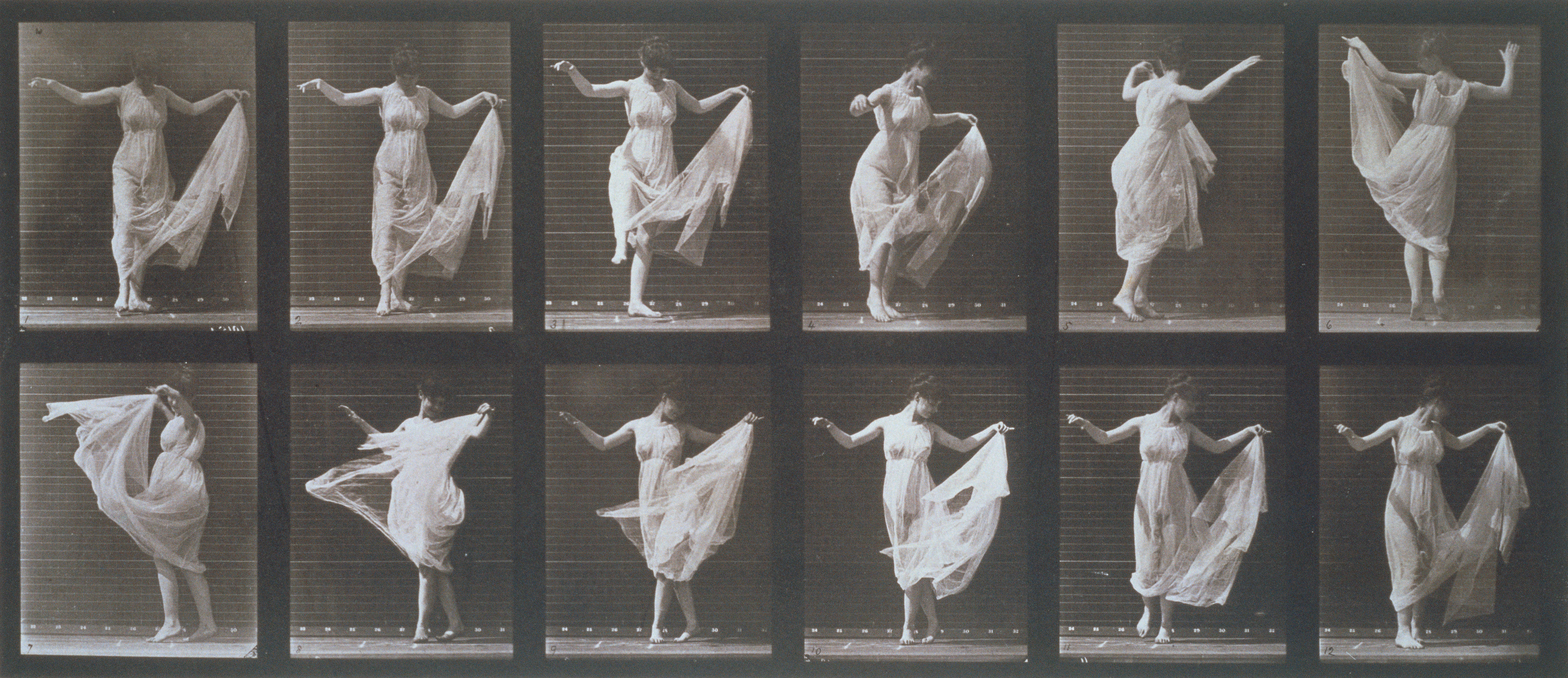 In Focus: The scandalous child of Empire, the murderous photographer and the woman who fatally brought them together
In Focus: The scandalous child of Empire, the murderous photographer and the woman who fatally brought them togetherEadweard Muybridge was not only the pioneering photographer of motion, but also a murderer. Jason Goodwin relishes this tale of the dashing rogue and adventurer who became his victim.
